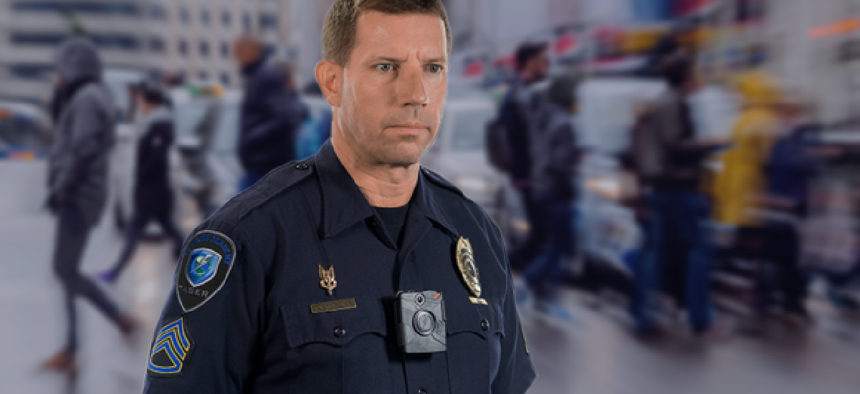The push for police body cameras comes with plenty of tech challenges


Connecting state and local government leaders
Cities across the country are contemplating video capture, but early adopters are finding that cost, storage and dead batteries can all complicate the effort.
The increasing number of police brutality claims around the United States are raising calls for police body cameras, which many see as a way to increase transparency and trust between law enforcement and citizens. According to a YouGov/Economist poll, 88 percent of Americans support the use of body cameras on police.
But citizens and politicians who see body cameras as quick fix may be underestimating the costs and complexity of this potentially game-changing technology. For starters, the costs of purchasing cameras and storing recorded video can be high.
Body cameras from Vievu and Taser International, two prominent camera and cloud storage vendors, cost between $300 and $400, with high-end cameras running as much as $1,000 each.
When it comes to video storage, the price ranges are even higher, depending on the amount of video stored, how long it needs to be available and what technology is used to analyze it.
The Sheriff’s Office of Pickens County, S.C., for example, uses its own storage system, in which a supervisor manually downloads the recordings into the system each day. Server space for the body camera recordings of the 93 officers can cost $10,000 to $15,000 Sherriff Rick Clark told the Greenville News.
The maintenance and security worries of local storage has many departments eyeing the cloud, but most cloud storage platforms don't yet meet the security policy and privacy standards.
Vievu recently partnered with Microsoft to store video in the Azure Government Cloud, where it is complies with the FBI’s Criminal Justice Information Services (CJIS) Division policies. Those standards require, among other things, that cloud vendors screen the people who can access and recompile criminal justice information, and that appropriate controls are in place to protect the full lifecycle of data.
Missouri’s Columbia Police Department uses Evidence, Taser’s cloud service, which runs on a CJIS-compliant Amazon Web Services infrastructure, for its storage. In this system, officers place their cameras in a recharging station at the end of their shifts, and the video is automatically uploaded as an encrypted file. PDFs, photos and other digital data from the body camera video and can be seen by district attorneys and other officials. This service costs about $20,000 per year, according to a report by KBIA, a Mid-Missouri Public Radio station.
New York City started a pilot program last year using 60 cameras in five precincts and began the program with $60,000. According to Commissioner William J. Bratton, the cost of storing the video and administering the program is expected to quickly ratchet up the cost.
Cost isn’t the only stumbling block. Equipment failures and user error may keep the technology from delivering the transparency it promises.
In Denver, police used body cameras for a six-month period that ended last December. Out of 80 use-of-force incidents that occurred during the testing, only 21 were recorded, according to a report by the Office of Independent Monitor, a civilian oversight agency created by the city. Officers that were using the cameras either forgot to turn them on or wore them improperly for recording. Other cameras weren't adequately charged, or officers didn't properly follow activation procedures.
Still, use of the cameras have been shown to help resolve complaints, and in some cases have exonerated officers.
“We have been able to resolve several complaints as a result of body camera footage that we’ve been able to view,” Michael Tobin, executive director of D.C.’s Office of Police Complaints told US News. “They’re going to help with any type of complaint in which the camera is running and it is turned on.”
Most states and municipalities have either started pilot programs for the use of body cameras or are studying the options. While it could take years before rules governing the use of police body cameras are complete, the technology is now available for those that can take advantage of it.
NEXT STORY: When Drivers Adjust to Speed Camera Enforcement




